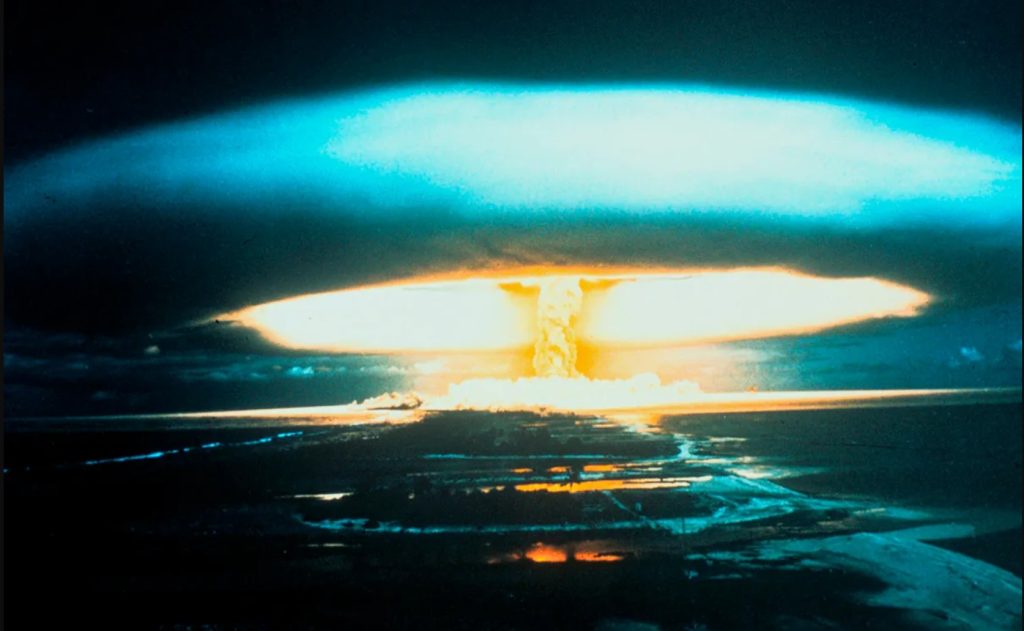
I hope governments are not that mad and crazy. But after the Covid plandemic, everything is possible. The conclusions of the new research below could be one of the reasons why the West, lead by the US, is actively working to escalate worldwide conflicts into nuclear wars (against Russia or China)… In one word: Depopulation!
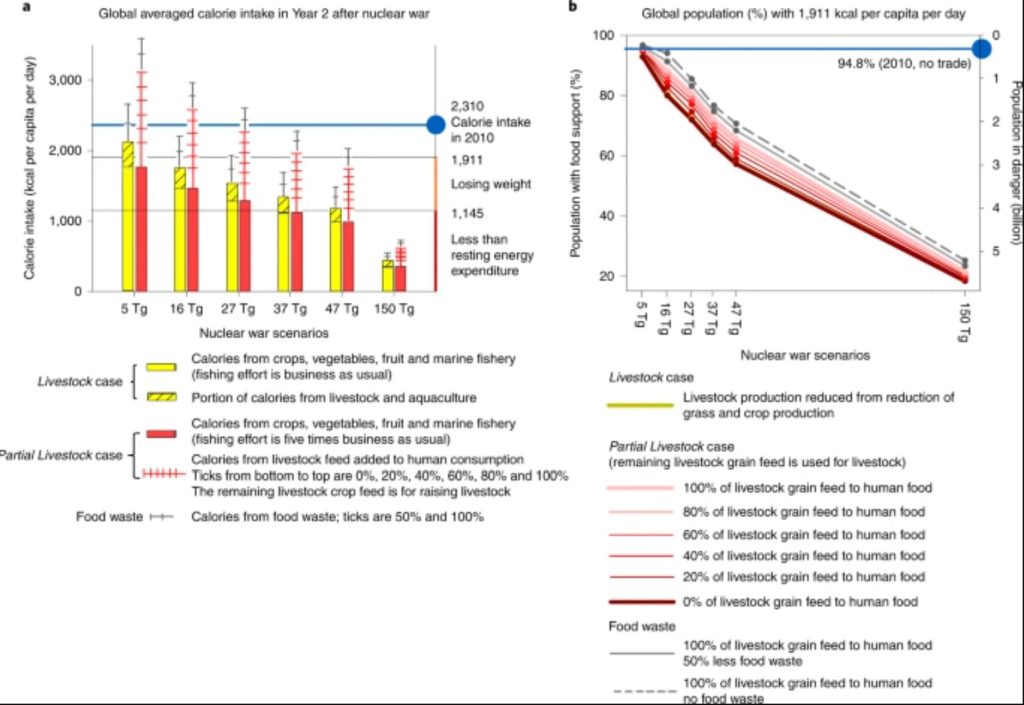
In a new Nature publication, scientists show that even a small conflict in which two nations unleash nuclear weapons on each other could lead to worldwide famine, new research suggests. Soot from burning cities would encircle the planet and cool it by reflecting sunlight back into space. This in turn would cause global crop failures that — in a worst-case scenario — could put 5 billion people on the brink of death.
“A large percent of the people will be starving,” says Lili Xia, a climate scientist at Rutgers University in New Brunswick, New Jersey, who led the work. “It’s really bad.”
The research is the latest in a decades-long thought experiment about the global consequences of nuclear war. It seems especially relevant today as Russia’s war against Ukraine has disrupted global food supplies, underscoring the far-reaching impacts of a regional conflict.
Scenarios big and small
Nuclear war comes with a range of lethal impacts, from killing people directly in atomic blasts to the lingering effects of radiation and other environmental pollution. Xia and her colleagues wanted to look at the consequences farther afield from the scene of war, to explore how people all around the planet could also suffer.
They modelled how climate would change in various parts of the world following a nuclear war, and how crops and fisheries would respond to those changes.
The scientists analysed six war scenarios, each of which would put different amounts of soot into the atmosphere, and drop surface temperatures from anywhere between 1 and 16 °C. The effects could linger for a decade or more.
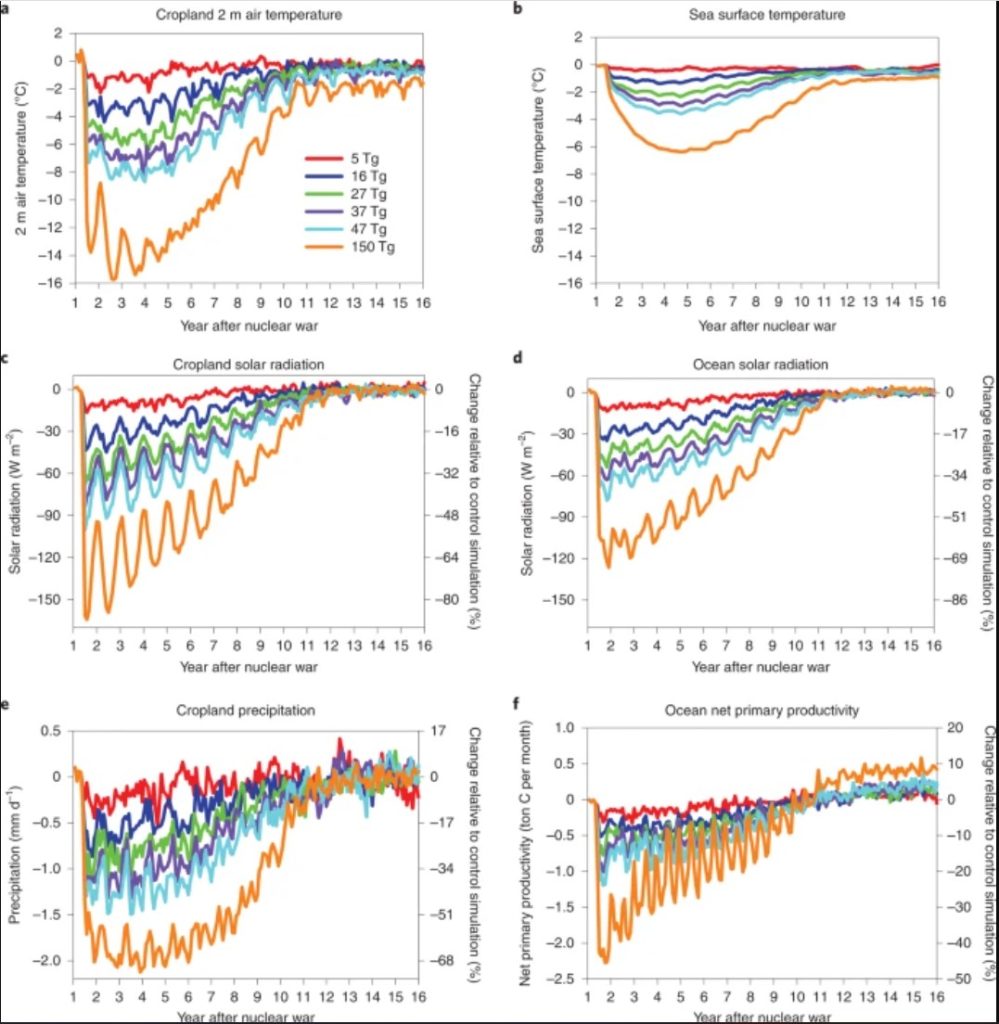
A nuclear war between India and Pakistan, perhaps triggered over the disputed Kashmir region, could loft between 5 million and 47 million tonnes of soot into the atmosphere, depending on how many warheads were deployed and cities destroyed. A full-out nuclear war between the United States and Russia could produce 150 million tonnes of soot. The globe-encircling pall would persist for years until the skies eventually cleared.
Using data from the United Nations’ Food and Agriculture Organization, Xia’s team calculated how declining crop yields and fishery catches after a nuclear war would affect the number of calories available for people to eat. The scientists studied several options, such as whether people continued to raise livestock or whether they routed some or all crops meant for livestock to humans instead. The study assumed there would be some repurposing of biofuel crops for human consumption, and people would cut back on or eliminate food waste. It also assumed that international trade would stop as countries chose to feed people within their own borders rather than exporting food.
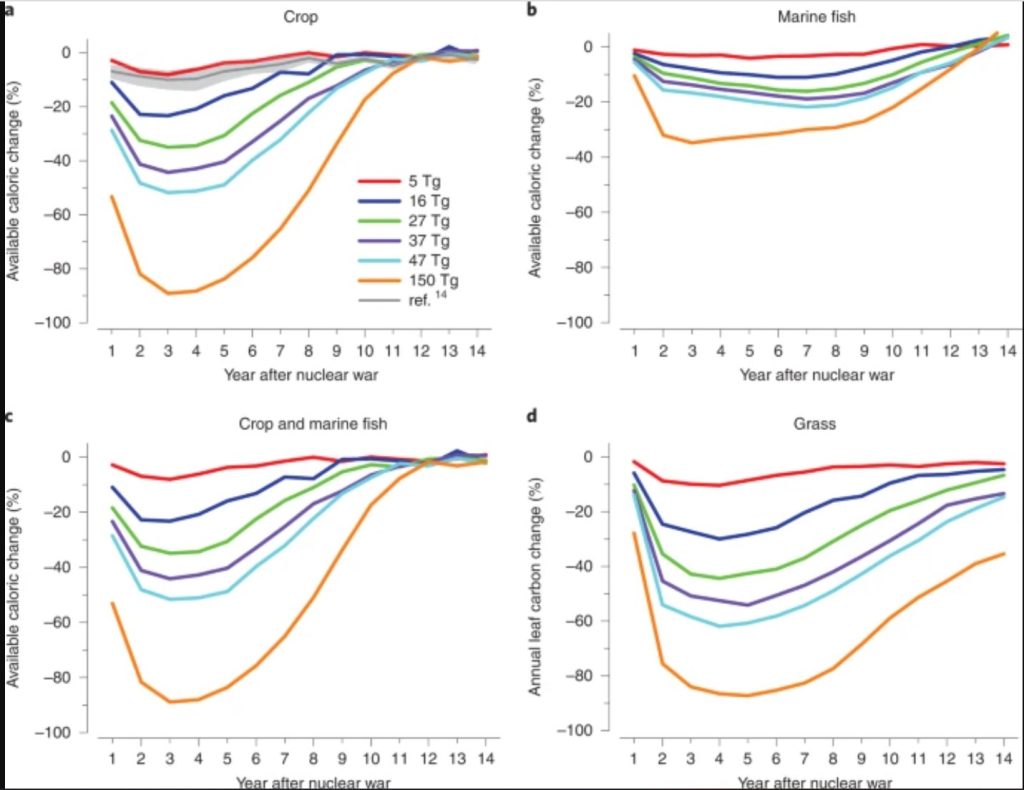
Xia notes that the study relies on many assumptions and simplifications about how the complex global food system would respond to a nuclear war. But the numbers are stark. For even the smallest war scenario, of an India–Pakistan conflict that results in 5 million tonnes of soot, calorie production across the planet could drop by 7% in the first five years after the war. In a 47-million-tonnes-of-soot scenario, global average calories drop by up to 50%. In the worst case of a United States–Russia war, calorie production drops by 90% three to four years after the war.
‘Let’s move to Australia’
The nations most affected would be those at mid to high latitudes, which already have a short season for growing crops and which would cool more dramatically after a nuclear war than tropical regions would.
The United Kingdom, for instance, would see sharper drops in food available than a country such as India that is located at lower latitudes. But France, which is a major exporter of food, would fare relatively well — at least in the lower-emission scenarios — because if trade were halted, it would have more food available for its own people.
Another less-affected nation is Australia. Isolated from trade in the wake of a nuclear war, Australia would rely mainly on wheat for food. And wheat would grow relatively well in the cooler climate induced by atmospheric soot. On the team’s map showing large portions of the world coloured red, for starvation, Australia gleams an untouched green, even in the severe war scenarios. “The first time I showed my son the map, the first reaction he had is ‘let’s move to Australia,’” Xia says.
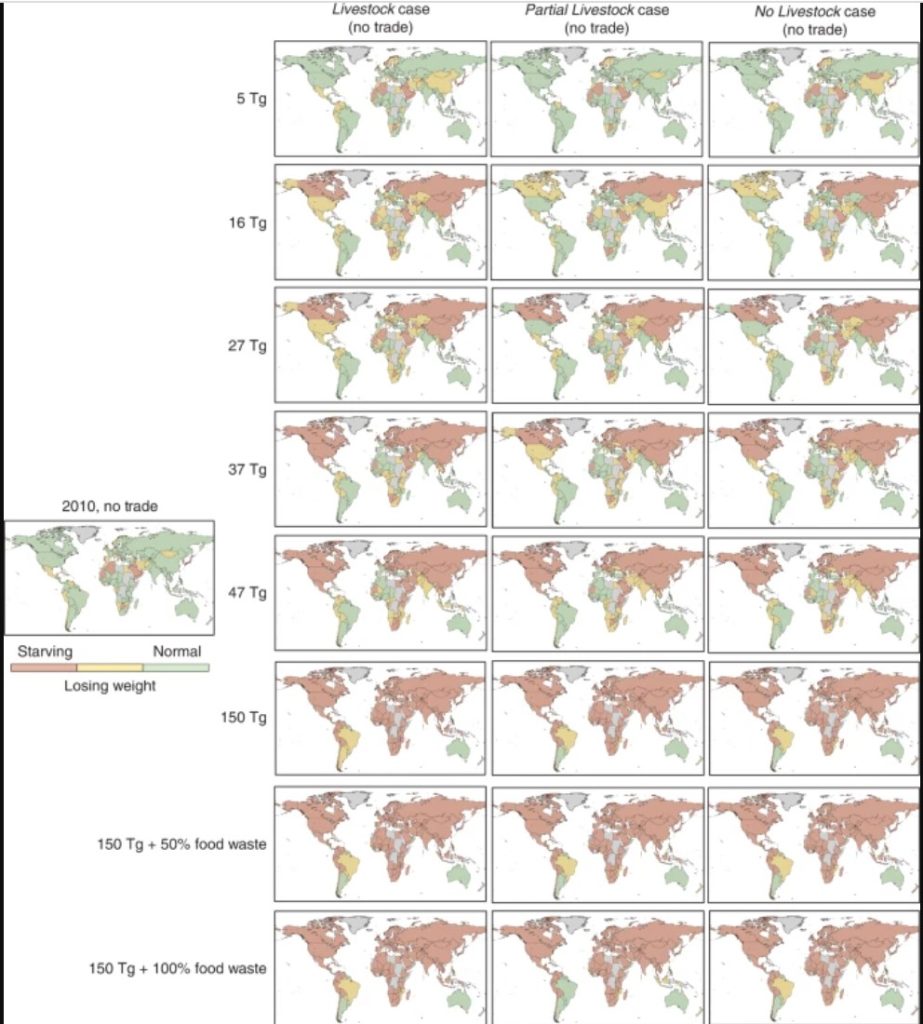
The study is a useful step towards understanding the global food impacts of a regional nuclear war, says Deepak Ray, a food-security researcher at the University of Minnesota in Saint Paul. But more work is needed to accurately simulate the complex mix of how crops are produced around the world, he says. For instance, the research took into consideration national crop production numbers, but reality is much more nuanced, with different crops being grown in different regions of a country for different purposes.
Nuclear war might seem less of a threat than it did during the cold war, but there are still nine countries with more than 12,000 nuclear warheads among them. Understanding the potential consequences of nuclear war in detail could help nations better assess the risks.
“It is rare to happen — but if it happens, it affects everyone,” Ray says. “These are dangerous things.” [Nature, Nature]
StrangeSounds.org has been banned from ad networks and is now entirely reader-supported CLICK HERE TO SUPPORT MY WORK… I will send you a small gemstone if you give more than 25$… Thanks in advance!
Another way to support my work is by signing in to get FREE information about how to invest in GOLD, SILVER and other PRECIOUS METALS to limit the effects of inflation on your IRA/4001K… As the Dow Jones is sinking and the inflation is hiking it’s the right to invest in precious metals!
You will finally find some great affiliate products that I recommend you to add to your disaster & preparedness kit:
- Protect your home and car with the best EMP, solar flares and lightning shield available…
- Health Ranger Store: Buy Clean Food and Products to heal the world…
- You will ALWAYS have electricity with this small portable SOLAR power station…
- Stock up on Iodine tablets for the next nuclear disaster…
- Qfiles is another great site for alternative news and information…





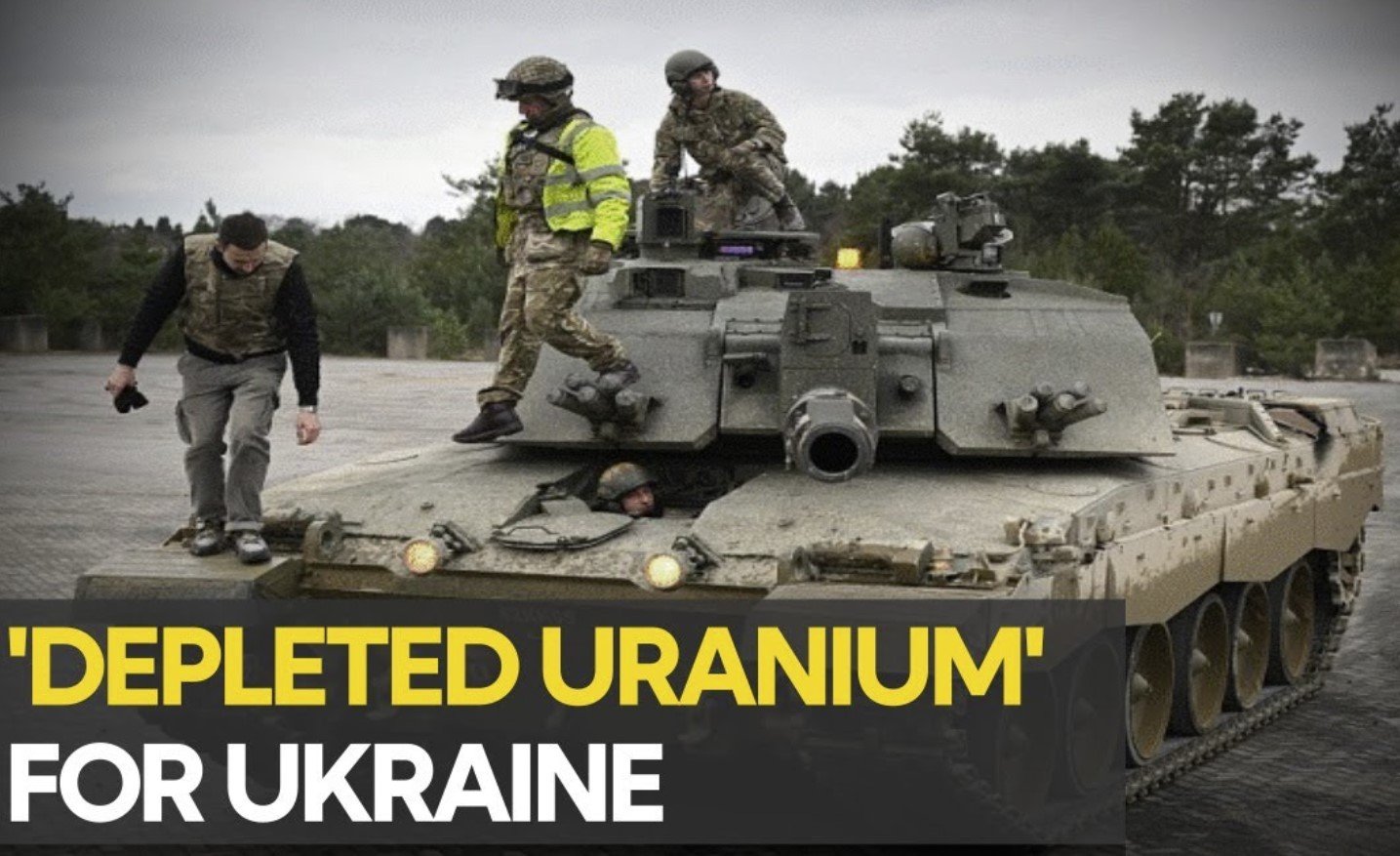
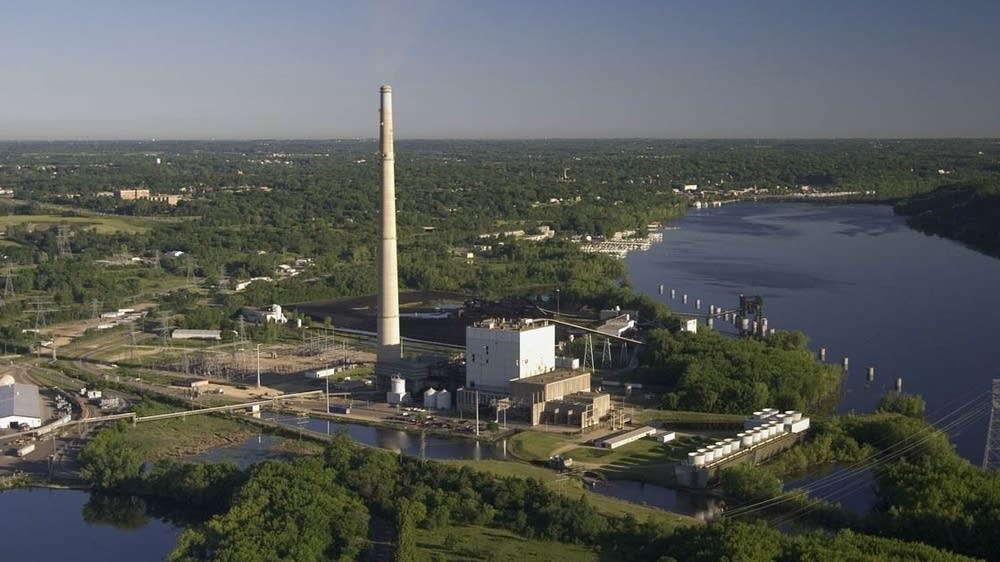

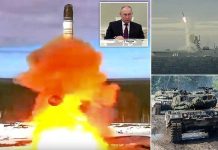
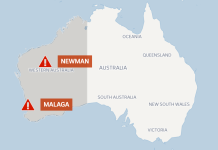

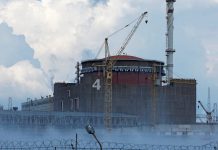
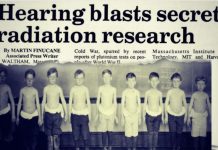

That’s all fine and dandy, but we have always had this threat. I grew up during the Cold War. From Bay of Pigs forward. There is what is called mutually assured destruction, which precludes sane people ( with cooler heads ) from nuclear war.
At this rate, an EMP over the heartland is what to beware of these days.
Well we all are in same page indeed… We have told you great full Martial law will be comeing after Canadian Martial Law ..Today more nations are in agony , and wars, and disunity, We have seen many fall of nations in front of our eyes. Sri Lanka ,, Haiti and many others. UK Queen is globalist and she will do any thing to eat up USA. divided all of us , Trump, Biden, Abortion, No Abortion, and many other things. A divided nation will not stand for many more months. Once fall of USA has arrived sooner than you think. Then hell will brake loose.. I ask all read other nations India kicked British and now 75 years of freedom. Is really still colony of British controled greed. Why 1Billion Indians are poor living conditions. UK still owns over 100 nations but people think are freedom?
We never been free and soon we all take bait that UK Queen set us up all , we have no escape ?
This beautifull Nation is gone to be annexed to Canada and Mexico under North American Union and AMERO will be new Money of NAU? Indeed when people with guns demonstrate it will soon be bloody hell USA. Queen of London knows every tricks USA citizens to Civil War 2? What a Shame indeed.
Well we all are in same page indeed… We have told you great full Martial law will be comeing after Canadian Martial Law ..Today more nations are in agony , and wars, and disunity, We have seen many fall of nations in front of our eyes. Sri Lanka ,, Haiti and many others. UK Queen is globalist and she will do any thing to eat up USA. divided all of us , Trump, Biden, Abortion, No Abortion, and many other things. A divided nation will not stand for many more months. Once fall of USA has arrived sooner than you think. Then hell will brake loose.. I ask all read other nations India kicked British and now 75 years of freedom. Is really still colony of British controled greed. Why 1Billion Indians are poor living conditions. UK still owns over 100 nations but people think are freedom?
We never been free and soon we all take bait that UK Queen set us up all , we have no escape ?
This beautifull Nation is gone to be annexed to Canada and Mexico under North American Union and AMERO will be new Money of NAU?